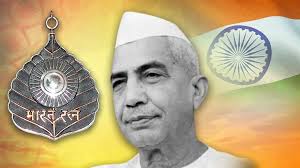Chaudhary Charan Singh: A Visionary Leader in Indian Politics
Introduction to Chaudhary Charan Singh
Chaudhary Charan Singh was a prominent Indian politician and a significant figure in post-independence Indian politics. He served as the 5th Prime Minister of India from 1979 to 1980, with a tenure marked by his commitment to agrarian reforms and rural development. Known for his staunch advocacy for farmers, he earned a reputation as the ‘champion of farmers’ in Indian political circles.
Early Life and Political Journey
Born on December 23, 1902, in a small village in Uttar Pradesh, Charan Singh came from a farming family. His early education was rooted in the local village, followed by studies at the Aligarh Muslim University. Initially, he joined the Indian independence movement and became active in the Indian National Congress. However, his political ideology diverged over time, leading him to form his own political path that focused on the welfare of rural India. His first significant political success came when he became the Member of the Legislative Assembly in Uttar Pradesh in 1937.
Contributions as a Politician
As a leader, Charan Singh’s primary focus was on the welfare of the farmers. He introduced various reforms aimed at improving the conditions of peasants, including the abolition of zamindari (landlordism), which played a significant role in shaping rural India’s future. His efforts led to the creation of the ‘Kisan’ movement, which garnered widespread support among the farming community. As a union minister in the 1970s, he introduced several initiatives aimed at enhancing agricultural productivity and providing farmers with a fair share of the economic pie.
Prime Ministership and Challenges
Charan Singh’s rise to the office of Prime Minister came during a politically turbulent period in India. In 1979, he succeeded Morarji Desai as the Prime Minister after the latter’s resignation. Charan Singh’s tenure was marred by political instability, as his government faced opposition from various political factions, leading to his resignation in 1980. Despite his brief tenure, Charan Singh’s legacy as a farmer’s leader remained intact. He continued to have a significant influence on Indian politics, particularly in the rural areas.

Why this News is Important: A Glimpse into Charan Singh’s Political Legacy
Focus on Agrarian Reforms
Chaudhary Charan Singh’s legacy as a farmer-centric leader holds considerable importance, especially in the context of current agricultural issues in India. With a large portion of India’s population still dependent on agriculture, his work towards land reforms, such as the abolition of zamindari and his emphasis on rural development, provides crucial historical context. Understanding his approach is essential for students focusing on rural development policies and agricultural reforms in India.
Leadership in Times of Political Uncertainty
Charan Singh’s tenure as Prime Minister came at a time of great political instability, especially after the Emergency period (1975-77). His ability to rise to power in such a scenario illustrates the complex dynamics of Indian politics in the late 20th century. His short tenure, while not marked by major achievements in terms of national policy, is an essential study in political resilience and coalition-building under difficult circumstances.
Impact on Future Leaders and Movements
Chaudhary Charan Singh’s approach to political leadership, particularly his focus on the agrarian economy, influenced subsequent political movements, especially those representing rural interests. His work is still relevant today, as farmers continue to be a significant demographic in India’s political landscape. Students preparing for government exams should study his contributions as they reflect the ongoing political and economic struggles within rural India.
Historical Context: Background Information on Chaudhary Charan Singh’s Political Legacy
Chaudhary Charan Singh’s Role in Pre-Independence India
Though primarily known for his post-independence contributions, Charan Singh was an active member of the Indian independence movement. He initially joined the Indian National Congress and worked alongside leaders like Jawaharlal Nehru and Sardar Vallabhbhai Patel. However, his differences with the Congress led him to break away and form his own political party, the Bharatiya Lok Dal, which eventually played a pivotal role in shaping the politics of Uttar Pradesh and rural India.
Rise to Prominence in Post-Independence India
In post-independence India, Charan Singh’s focus on rural development and his work as a member of various governments positioned him as a leader with a deep understanding of the socio-economic challenges facing India’s farmers. His tenure as the Union Minister for Agriculture and subsequent work as the Chief Minister of Uttar Pradesh allowed him to shape policies directly aimed at improving the lives of peasants and landowners alike.
Political Instability and the Emergency Period
The Emergency period from 1975 to 1977 was a pivotal moment in Indian politics. Charan Singh’s rise to the position of Prime Minister in 1979 was a direct consequence of the political chaos following the resignation of Indira Gandhi. His government faced immediate challenges from rival factions, which ultimately led to its downfall in 1980. Despite his brief term, Charan Singh remained influential, and his focus on farmers continued to shape Indian politics.
Key Takeaways from Chaudhary Charan Singh’s Biography
| S. No. | Key Takeaway |
|---|---|
| 1 | Chaudhary Charan Singh was known as the ‘champion of farmers’ for his focus on agrarian reforms. |
| 2 | He introduced key agricultural reforms, including the abolition of zamindari (landlordism), which significantly impacted rural India. |
| 3 | Charan Singh served as India’s 5th Prime Minister, though his tenure was short due to political instability. |
| 4 | His leadership in the Kisan movement garnered significant support among farmers, shaping India’s agricultural policies. |
| 5 | Charan Singh’s political ideology and reforms continue to influence Indian politics, particularly in rural areas and agricultural development. |
Important FAQs for Students from this News
Who was Chaudhary Charan Singh?
Chaudhary Charan Singh was the 5th Prime Minister of India, known for his significant contributions to agrarian reforms and his advocacy for the welfare of farmers.
When did Chaudhary Charan Singh serve as Prime Minister of India?
He served as the Prime Minister from July 28, 1979, to January 14, 1980, during a time of political instability in India.
What was Charan Singh’s primary focus during his political career?
Charan Singh’s primary focus was on agrarian reforms, rural development, and the welfare of farmers in India.
Which major reform is Chaudhary Charan Singh known for?
He is most notably known for the abolition of zamindari (landlordism), a reform that aimed at improving the conditions of farmers and the rural economy.
What was the Kisan movement and how did Charan Singh contribute to it?
he Kisan movement, initiated by Charan Singh, focused on addressing the needs and issues of farmers, advocating for their rights and economic upliftment. Charan Singh’s leadership played a significant role in strengthening this movement.
Some Important Current Affairs Links


















